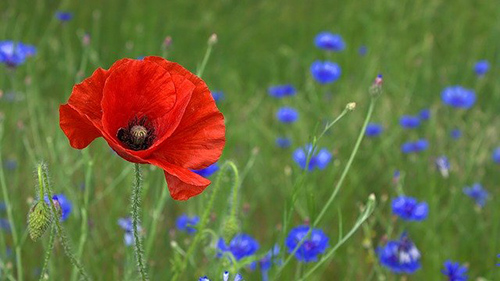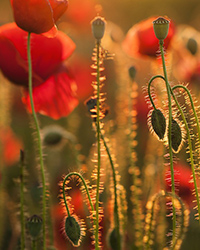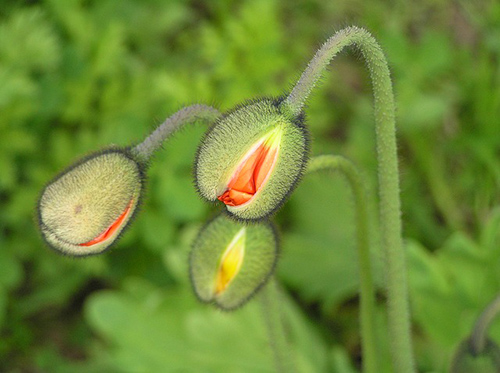Contents
The poppy plant is one of the most attractive medicinal herbs. The ancient Greeks and Romans consumed poppies in salads, and this tradition has survived in some Mediterranean areas, such as Catalonia. Despite its red color, a sign of masculinity, the poppy has been related to sleep since ancient times. Morpheus, the Greek god of sleep, touched those he wanted to sleep with a poppy, according to the myth.

Healing Properties and Indications
The latex of the poppy plant contains four alkaloids (readine, reagenine, rearrubine I, and rearrubine II). However, it does not contain morphine, as was supposed. The poppy also contains anthocyanines and mucilage. The effects of these alkaloids are similar to those of morphine; however, they lack the latter’s toxicity. There is no risk of addiction or habit. Messegue says poppies are “the harmless opium in the family first-aid kit.” These are the properties of the poppy plant:
- Sedative and narcotic: With a mild action and free from the risks of psycho-medicines, the use of the poppy plant is recommended for children and older people, to whom it gives a calm sleep. It can be helpful for adults to eliminate anxiety or stress, which is so frequent nowadays.
- Antitussive and expectorant: The poppy is recommended to calm the persistent cough of whooping cough, dry bronchitis, and asthma. Moreover, it produces abundant perspiration, thus beneficial for people suffering from colds or influenza.
The poppy plant is one of the four plants that make the famous “pectoral infusion of four flowers,” which also includes coltsfoot, cat’s foot, and high mallow. - Toothache: Mouth rinses with an infusion of poppy petals produces a notable analgesic effect in many cases.
Poppy Plant Scientific Facts

- Other names: Corn poppy, field poppy.
- French: Coquelicot.
- Spanish: Amapola.
- Environment: Very common in wheat fields, its seeds, mixed with grain, have spread worldwide.
- Description: Annual plant of the Papaveraceae family, to which the opium poppy also belongs. Fine hairs cover its stem, and when cut, it segregates white latex. The flowers have four bright red petals with a black stain at their base. The fruit is cone-shaped with an upper covering. Despite being well known, similar species lack any medicinal properties.
- Parts of the plant used medicinally: The fruits or capsules and the petals of its flowers.
How to use Poppy

- Raw petals in salads. Gather the plant on Spring mornings.
- Infusion with six to eight petals per cup of water. Drink up to three cups daily. The petals of the poppy plant must be preserved after being dried in a shady place.
- Syrup: Poppy syrup is prepared for children by infusing ten grams of dry petals in 170 ml of water. Steep for five minutes, strain the infusion, and add 340 g of brown sugar. The recommended dose varies from two to four teaspoonfuls (depending on the age) before bed.
- Decoction: The poppy’s fruits, called capsules, have the same effects as the petals; however, they contain more active components. These capsules must be gathered before the Summer when they are green. The decoction is prepared with two or three capsules per 100 ml of water. Drink several tablespoonfuls before going to bed.
DISCLAIMER: All content on this website is presented solely for educational and informational objectives. Do not rely on the information provided as a replacement for advice, diagnosis, or treatment from a qualified medical expert. If you are pregnant, nursing, or have any preexisting medical concerns, talk to your doctor before using any herbal or natural medicines.
REFERENCES
- George D. Pamplona-Roger, M.D. “Encyclopedia of Medicinal Plants.” George D. Pamplona-Roger, M.D. Encyclopedia of Medicinal Plants. Ed. Francesc X. Gelabert. Vols. 1 San Fernando de Henares: Editorial Safeliz, 2000. 318, 319. Print.
- WebMD: https://www.webmd.com/vitamins/ai/ingredientmono-1503/poppy-seed
- PharmEasy Blog: https://pharmeasy.in/blog/15-amazing-benefits-of-poppy-seeds-khus-khus/
- Medical News Today: https://www.medicalnewstoday.com/articles/poppy-seeds
